Session Organizer: Gwen Fischer, University of Minnesota
Pediatric medical device inventors in various commercialization phases will talk about their technologies and lessons they've learned along the way towards improving pediatric medical care.
Advances in Pediatric Devices
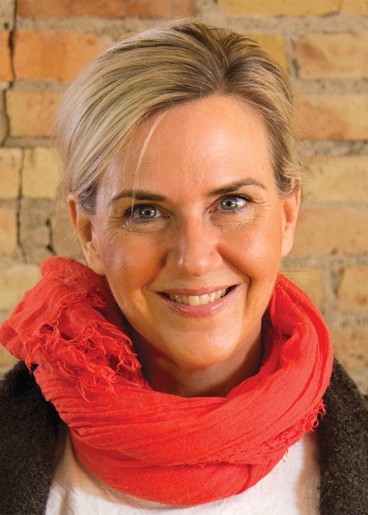
Annamarie Saarinen
Bloom Standard
Annamarie is co-founder of both the Newborn Foundation and Bloom Standard, a social impact company developing diagnostic and screening technologies for mothers, babies and children - with a focus on primary care, remote and resource poor settings. Bloom Standard’s self-driving ultrasound screening system received FDA Breakthrough Device Designation in 2023 as the first fully-autonomous ultrasound screening system. Their development has been supported by Children’s National Hospital, the Bear Institute for Health Innovation, the NCC-PDI, University of Minnesota Pediatric Device Innovation Consortium, Stanford Biodesign, Swansea University Faculty of Medicine, Health and Life Science, NHS Wales, the European Union-funded Accelerate Wales program, the Welsh Government, Texas Medical Center Innovation, Global Health Labs, Groove Capital, University Impact Fund, and more than a dozen academic medical sites globally. Annamarie has been recognized for spearheading the U.S. effort to become the first nation to implement universal newborn screening for congenital heart defects (CHD) - the most common and deadly birth defect. To date, 70 million newborns have been screened as part of implementation in all 50 states.
Annamarie was appointed by the U.S. Secretary of Health and Human Services to the federal Advisory Committee on Heritable Disorders in Newborns and Children (ACHDNC) and has drafted more than 40 pieces of health legislation, authored more than 200 policy briefings and co-authored 16 published manuscripts on the importance of advancing early detection and treatment of neonatal and pediatric health conditions. She also serves on the Minnesota Department of Health's Newborn Screening Advisory Board and on the board of the University of Minnesota Pediatric Device Innovation Consortium.
Solving Time Transparency in Healthcare (as an Academic): Lessons Learned from Building Q-rounds
Hospital rooms are waiting rooms too. Medicine is a team sport and without the ability for nurses and family members of patients to know when to expect the doctor for rounds, medical teams fail to meet with the family and communication breaks down, leading to the number one cause of medical errors. To solve this connection problem, we created Q-rounds, a virtual rounding queue software that provides real-time updates to nurses, interpreters, patients, and their families of when to expect the doctors for rounds and gives families who cannot be there in person an opportunity to RSVP to join remotely when it is their turn. In this session we'll discuss how we leveraged University resources to go from from a research question to a company and share lessons learned along the way.
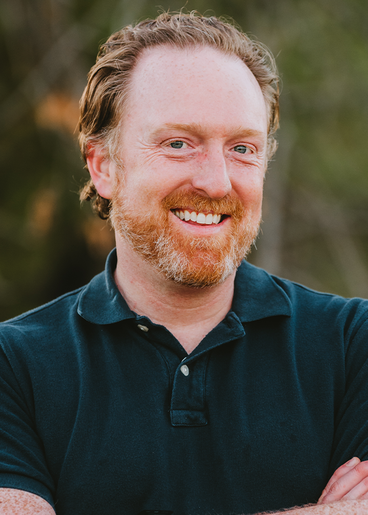
Mike Pitt
Professor of Pediatrics, University of Minnesota: Co-founder and CEO, Q-rounds
Dr. Mike Pitt is a Professor of Pediatrics at the University of Minnesota where he is an Associate Residency Program Director, Associate Chair of Faculty Development and Strategic Planning, and the Fellowship Director for hospital medicine. A winner of multiple teaching awards, Dr. Pitt speaks across the country with a primary focus of improving the way medical providers communicate with each other and their patients. He has authored over 100 peer-reviewed manuscripts and textbook chapters in leading medical journals and has developed curricula used at hundreds of universities in more than 20 countries. As an award-winning professional magician, he has performed for Fortune 500 Companies all over the world and has taught over 3,500 pediatricians how to think like a magician at the bedside to improve rapport and increase diagnostic yield. He is the co-founder and CEO of Q-rounds, a digital health solution helping to take the waiting around out of rounds.
Pediatric Chest Compression Device
Extracorporeal cardiopulmonary resuscitation (CPR) is an advanced cardiac resuscitation therapy used to rescue patients who do not respond to traditional CPR. During pediatric E-CPR emergency surgery is done in the neck to connect the patients’ blood vessels to the heart lung machine while chest compressions are ongoing. ECPR therapy is able to salvage about 40% to 50% of babies who otherwise would not have survived a cardiac arrest. Preventing brain injury that is sustained during resuscitation and ECPR cannulation could further improve survival and outcomes. This presentation discusses pediatric chest compression device as a potential brain protection strategy in pediatric ECPR therapy and the journey of this device so far.
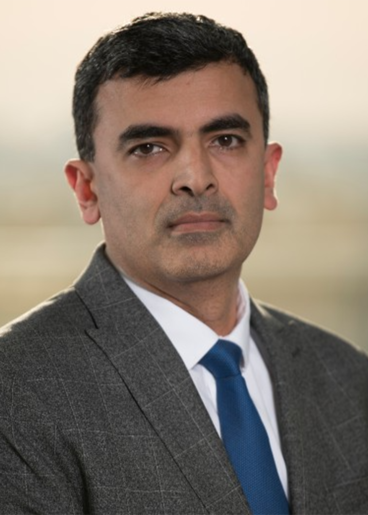
S Murfad Peer
Associate Professor, Pediatric Cardiac Surgery, University of Minnesota
Syed Murfad Peer, MD is a pediatric and congenital heart surgeon at the University of Minnesota Masonic Children’s hospital. Dr. Peer completed his medical education and adult cardiac surgical training in India. He further trained in congenital and pediatric cardiac surgery at Children’s National Hospital in Washington, DC and at the C.S Mott Children’s Hospital, University of Michigan. He has also completed advanced training in heart transplantation and ventricular assist device therapy at the University of Michigan.
Dr. Peer is a passionate basic science researcher and an innovator. He has done extensive research on mechanical support of the single ventricle circulation in animal models and computer simulations. His research has also focused on various brain protection and real-time clot detection strategies to improve safety and outcomes of mechanical assist device therapy in pediatric patients. He is currently working on developing a pediatric chest compression device for use during pediatric extracorporeal cardiopulmonary resuscitation. Dr. Peer has published extensively in the field of congenital heart surgery and has made several presentations at national and international meetings. Dr. Peer is a member of the Society of Thoracic Surgeons and the World Society for Pediatric and Congenital Heart Surgery. He is a peer reviewer for several international journals.
When UX Design Revolves Around a Toddler
Children deserve to have access to high quality ear care 24/7 from the comfort of home. Telemedicine does not currently accommodate ear care due to the challenges of parents obtaining an exam in the home setting and healthcare providers making sense of it remotely. How can this be accomplished? We have focused on the toddler and caregiver as our end users and have designed a medical device platform of software and hardware specifically for them. Our experience demonstrates how adult-centered design cannot be retrofitted for the toddler use case. This is what makes pediatric medical device design both challenging and rewarding.

Courtney Hill
Physician Entrepreneur, Pediatric Otolaryngologist, Glimpse Diagnostics
Dr. Courtney Hill is a fellowship-trained pediatric ENT surgeon, entrepreneur, and patented medical device inventor. She has a long history of pediatric otolaryngology research and has published extensively in her field. She was funded by the National Science Foundation to serve as Principal Investigator for a multi-center, prospective, pediatric, clinical study that collected the data needed to train an AI algorithm to distinguish ear disease. She is the founder and CEO of Glimpse Diagnostics, enabling high quality telemedicine care for little ears. Glimpse Diagnostics won the Life Science/ Health IT Division and was named the Top Woman-Led Company of the 2023 MN Cup.
Expanding Global Access to Kidney Dialysis: Challenges and Opportunities in Latin American and Nigeria
There is limited access to renal replacement therapy (RRT) for acute kidney injury and end stage kidney disease patients in low- and middle-income countries (LMICs). An estimated 9.1 million people globally will not be able to access RRT by 2030. This growth is aided by advancing age, diabetes, and hypertension with a greater burden expected in LMICs which are experiencing an epidemiological transition from communicable to non-communicable disease. While LMICs may be the most affected, they are also the least equipped; less than 10% of those who need RRT in LMICs are able to access it. Over the last four years, the Wright Lab has used semi-structured interviewing methods to identify barriers to dialysis treatment for patients in Nigeria, Zimbabwe, and Latin America. The findings support the hypothesis that nephrologists and patients may be interested in and benefit from peritoneal dialysis (PD) as a treatment option. In Nigeria, patients performed hemodialysis (HD) treatment less frequently due to high costs which left them feeling weak between treatments, often resulting in lost wages. Patients were drawn to the perceived independence of PD. The majority of patients indicated strong familial support and comfort with the idea of administering treatment in their home. A service to train patients on treatment administration and local PD fluid production were identified as necessary to increase the feasibility of PD adoption. In Latin America, interviews conducted with physicians during a Saving Young Lives workshop on pediatric PD indicated a desire to expand PD programs, with concerns around supply sourcing, staff availability and training, and infection risks.
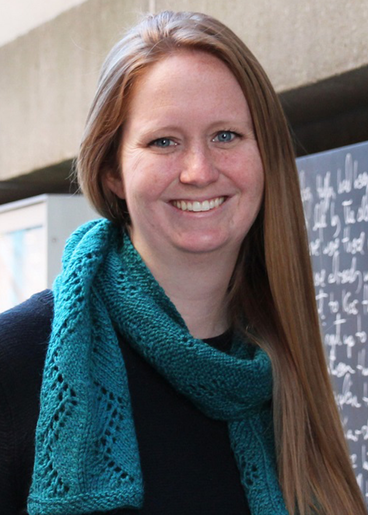
Natasha Wright
University of Minnesota
Natasha Wright is an Assistant Professor of Mechanical Engineering at the University of Minnesota, USA. Her research focuses on decentralized water treatment systems in low- and middle-income communities, with applications to drinking water and human health. By decentralizing energy-water systems, her group aims to eliminate the inefficiencies that come with distribution, as well as increase the potential for and value of resource recovery. Current research projects include enabling decentralized desalination and industrial wastewater management in Navajo Nation and in India, increasing access to dialysis treatment in Nigeria via on-site compounding of dialysate fluids, and working to understand the role of intercultural interviewing pairs when conducting design interviews. She completed her PhD at Massachusetts Institute of Technology (MIT) in 2018. Natasha received her B.S.M.E. from the University of St. Thomas, St. Paul, MN.
Session Organizer
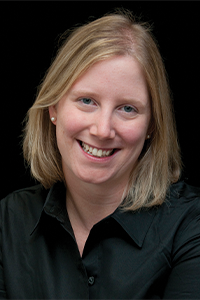
Gwen Fischer
Associate Chair of Research, Associate Professor, Department of Pediatrics
Dr. Fischer is an Associate Director of the Earl E. Bakken Medical Devices Center, Associate Chair of Research, Associate Professor, Department of Pediatrics, Faculty Member, Division of Pediatric Critical Care Medicine, Pediatric ECMO Co-Director, UofMN Medical School. Dr. Fischer is a Pediatric Critical Care Physician with a passion for development and testing of innovative medical products and pharmaceuticals. Her expertise is in critical care from preemies to adults, and devices for adults and pediatric patients with an emphasis in congenital heart disease, ECMO, and cardiopulmonary devices. Dr. Fischer founded and directs an industry-academic consortium to accelerate pediatric medical devices (www.thepdic.org). Dr. Fischer has significant experience in developing medical devices and has successfully worked with numerous medical device companies in product development, including clinical studies, and commercialization. Dr. Fischer has con
sulted with the FDA Pediatric Advisory Committee and reviewed post-market SAE for drugs and devices. Dr. Fischer is a sought-after speaker with a portfolio of publications on medical device, critical care, ECMO, drugs and innovation. Dr. Fischer has received numerous awards including ‘Minnesota’s Top Doctor.”